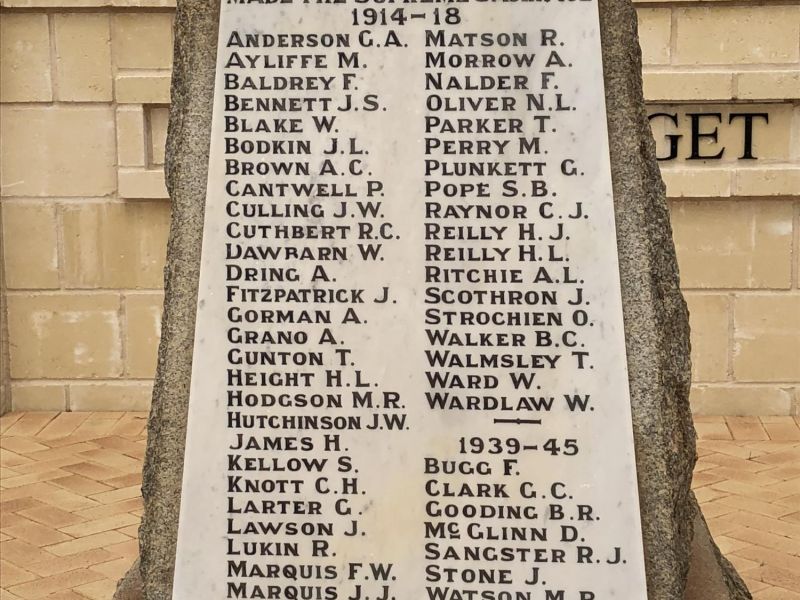Private William Blake, 43rd Australian Infantry Battalion (2538)
William Blake was born in about 1892 in Surry, England, the son of Phoebe and John Blake.
Little is known about Blake’s childhood. He came to Australia at the age of 18, probably with his brother John.
The brothers both settled in Western Australia, where William worked as a farmer in Dumbleyung, a small wheatbelt town south-east of Perth.
William Blake enlisted in the Australian Imperial Force on 28 August 1916. After initial training, in early November he embarked from Fremantle, arriving in England in mid-January 1917. More training followed, before he proceeded to France in May, joining the 43rd Battalion on 20 June.
He arrived just after the battalion had experienced its first significant action of the war. Nineteen powerful mines exploded under the German trenches along the Wytschaete–Messines ridge before the Australians made a successful attack south of the Messines village in Belgium.
Around a month later, at the end of July Blake was wounded in action, receiving a gunshot wound to the eyes on 31 July. He was evacuated to France for treatment and spent time recovering before returning to duty in early September.
Less than a month after returning to duty, Blake’s battalion took part in the battle of Broodseinde. Part of the Ypres offensive, the battle was a large “bite and hold” operation. The attacking troops’ advance would be preceded by a massive artillery bombardment; then a creeping barrage would lead them to their objectives and protect them as they consolidated their positions.
The attack began before dawn on 4 October 1917. The Australian troops involved were shelled heavily on their start line and one in seven of them became casualties before the attack began. When it did, the attacking troops were confronted by a line of troops advancing towards them; the Germans had chosen the same morning to launch an attack of their own. The Australians forged on through the German assault waves and gained all their objectives along the ridge.
But the battle was not without cost. German pillboxes were difficult to subdue, and the Australian divisions suffered 6,500 casualties.
Blake was again wounded in action, receiving a gunshot wound to his abdomen and one penetrating his head. He was taken to a casualty clearing station, but his wounds proved mortal and he died three days later, on 7 October 1917.
He was 25 years old.
He remains were buried in Lijssenthoek Military Cemetery.
DOW 7 October 1917
- Australian War Memorial https://www.awm.gov.au/collection/R1652936
 Australian War Memorial
Australian War Memorial